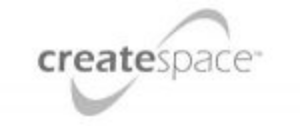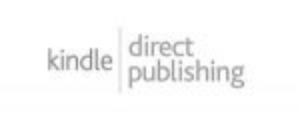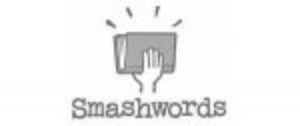
Let’s start with a simple truth: getting published isn’t as mysterious as it seems. For first-time authors, the process can feel like navigating a maze blindfolded—full of confusing terms, conflicting advice, and endless options. Should you self-publish or chase a traditional deal? How do you avoid scams? And what about marketing—how do you actually get people to read your book?
The reality is, publishing a book in 2025 is more accessible than ever—but it still requires planning, patience, and a clear understanding of the steps involved. This guide cuts through the noise and breaks down the process into actionable, easy-to-follow steps. Also, some practical advice to help first-time authors turn their manuscripts into published books.
And if you’d rather skip the guesswork and work with a team that’s helped hundreds of writers get published, Fleck Publisher is here to guide you every step of the way.
Step 1: Is Your Manuscript Really Ready?
Here’s a hard lesson many first-time authors learn too late: a rough draft isn’t a finished book. Before you even think about publishing, your manuscript needs to be polished—really polished.
Start by editing it yourself. Read it out loud (yes, actually speak the words) to catch awkward phrasing, repetitive sentences, or plot holes you might have missed. Then, hand it off to beta readers—people who aren’t afraid to give honest feedback. Friends, family, or writing groups can all help, but be clear: you need criticism, not just praise.
Finally, consider hiring a professional editor. This isn’t a step to skip. A fresh, expert set of eyes can turn a good manuscript into a great one. Think of it as an investment in your book’s success.
Step 2: Traditional vs. Self-Publishing—What’s the Right Choice?
This is the big question every writer faces, and there’s no one-size-fits-all answer. Let’s break it down:
Traditional Publishing
Traditional publishing means querying literary agents or submitting directly to publishers. If you land a deal, they handle editing, design, printing, and marketing. The upside? Zero upfront costs and the prestige of a traditional contract. The downside? It’s brutally competitive. Even talented writers often face years of rejections before getting published.
If you’re determined to go this route, research agents who represent your genre, follow submission guidelines exactly, and prepare for a long wait.
Self-Publishing
Self-publishing puts you in the driver’s seat. You control the timeline, the cover, the pricing—everything. Platforms like Amazon KDP, IngramSpark, and Fleck Publisher make it easier than ever to get published without a middleman.
The catch? You’re responsible for everything—editing, design, marketing, and distribution. But for many first-time authors, the trade-off is worth it. You keep more royalties, retain creative control, and can publish on your own schedule.
Real Talk: Self-publishing isn’t the “easy” route—it’s the independent route. If you’re willing to put in the work (or hire professionals to help), it can be incredibly rewarding.
Step 3: Choosing a Self-Publishing Platform That Fits Your Goals
If you’ve decided to self-publish, your next step is picking the right platform. Here’s a quick breakdown of the most popular options:
Amazon KDP (Kindle Direct Publishing): The go-to for most first-time authors. It’s free, user-friendly, and your book can be live in days. The downside? Your book is mostly limited to Amazon unless you opt for expanded distribution.
IngramSpark: If you want your book in physical bookstores and libraries, IngramSpark is the way to go. It offers global distribution but charges a small setup fee.
Fleck Publisher: For authors who want a hands-off, professional experience. Fleck Publisher handles everything—editing, design, printing, and marketing—so you can focus on writing. It’s ideal if you’d rather not deal with the technical side of publishing.
Step 4: Your Book Cover: The First Thing Readers Judge
Let’s be honest: readers do judge books by their covers. A poorly designed cover can sink your book before anyone even reads the description.
Your cover needs to do three things:
- Grab attention in a sea of thumbnails.
- Fit your genre—romance covers look different from sci-fi covers for a reason.
- Look professional—no clipart, no DIY designs unless you’re a trained designer.
If you’re not a designer, hire one. Websites like 99designs, Reedsy, and Fiverr offer affordable options. Or, if you’re working with Fleck Publisher, their team will create a cover that fits your book’s tone and appeals to your audience.
Step 5: Formatting Your Book: The Unsung Hero of Publishing
Formatting is the step most first-time authors overlook—until they realize their book looks like a mess on Kindle or in print.
Here’s what you need to know:
eBooks: Use a clean, simple font (Garamond, Arial, or Times New Roman). Avoid fancy fonts that are hard to read on screens.
Print Books: Pay attention to margins, line spacing, and chapter breaks. Most platforms offer templates to help.
Professional Help: If formatting feels overwhelming, Fleck Publisher can handle it for you.
Step 6: Pricing Your Book
Pricing your book is tricky. Too high, and readers won’t buy it. Too low, and you’ll struggle to make a profit.
Here’s a quick guide:
- eBooks: $2.99 to $9.99 is the sweet spot. Below $2.99, readers might assume it’s low-quality.
- Paperbacks: $10 to $20, depending on length and genre.
- Hardcovers: $20 to $30, usually for special editions.
Research similar books in your genre to see what readers expect. And don’t forget to factor in your costs—editing, cover design, and marketing all add up.
Step 7: ISBNs and Copyright—The Boring (But Necessary) Stuff
Yes, this part is dull, but it’s important.
ISBN (International Standard Book Number):
This is your book’s unique ID. If you’re self-publishing, you’ll need to buy one (or get a free one through KDP). Fleck Publisher can handle this for you if you’re working with them.
Copyright:
In most countries, your book is automatically copyrighted once it’s written. But if you want extra protection, you can register it officially.
Step 8: Launching Your Book: More Than Just Hitting “Publish”
Publishing your book is exciting, but don’t expect sales to roll in automatically. A successful launch requires planning.
Start by building an author platform:
- Create a simple website or blog.
- Set up social media accounts (Instagram, Facebook, or TikTok work well for authors).
- Start an email list to connect directly with readers.
Share behind-the-scenes content—like your writing process or sneak peeks—to build excitement. Consider running a pre-order campaign to generate early sales and boost visibility.
Step 9: Marketing Your Book: The Never-Ending Job
Here’s the hard truth: writing the book is only half the battle. Marketing it is the other half.
Start with these basics:
Social Media: Share updates, quotes, and engage with readers. Platforms like Instagram and TikTok are great for reaching new audiences.
Book Reviews: Reach out to book bloggers and reviewers in your genre. Positive reviews build credibility.
Paid Ads: Amazon Ads and Facebook Ads can help you reach a wider audience. Start small and adjust based on results.
Local Events: Host a book signing or reading at a local bookstore or café.
Step 10: What Comes Next? Keeping the Momentum Going
Publishing your book is a huge achievement, but it’s not the end of the journey. Keep engaging with readers, seeking reviews, and planning your next project.
Many first-time authors make the mistake of stopping after their first book. Don’t let that be you. Whether it’s a sequel, a new series, or a completely different project, keep writing. The more books you publish, the more you’ll grow your audience.






